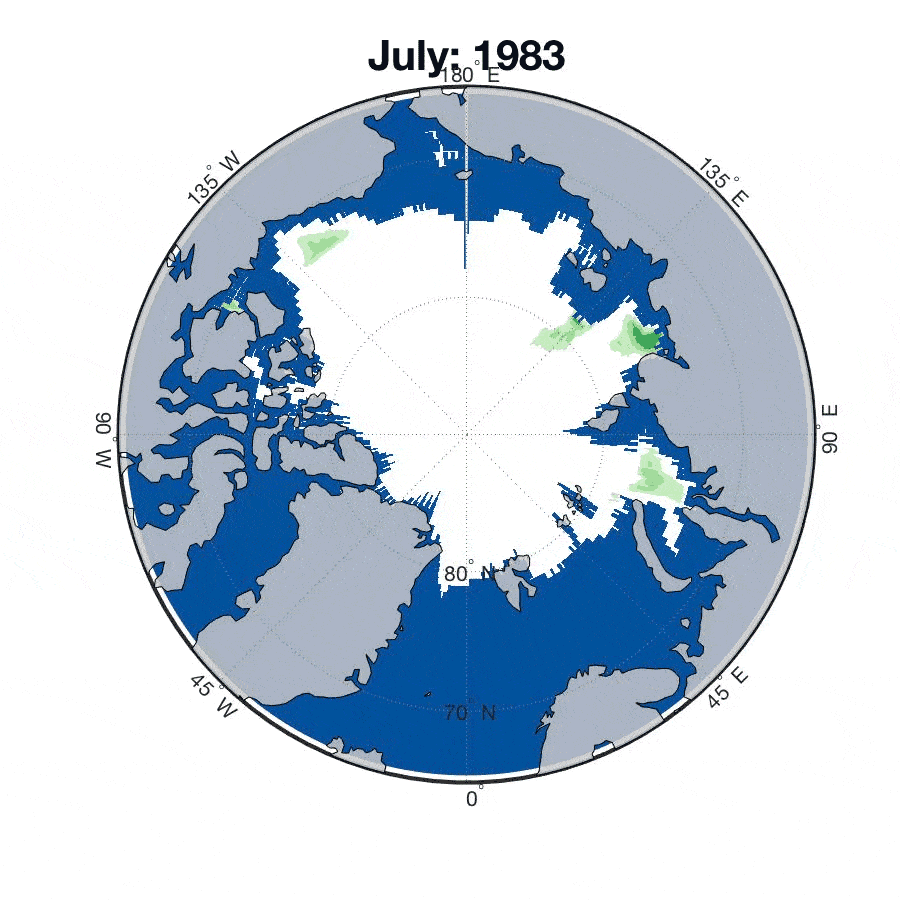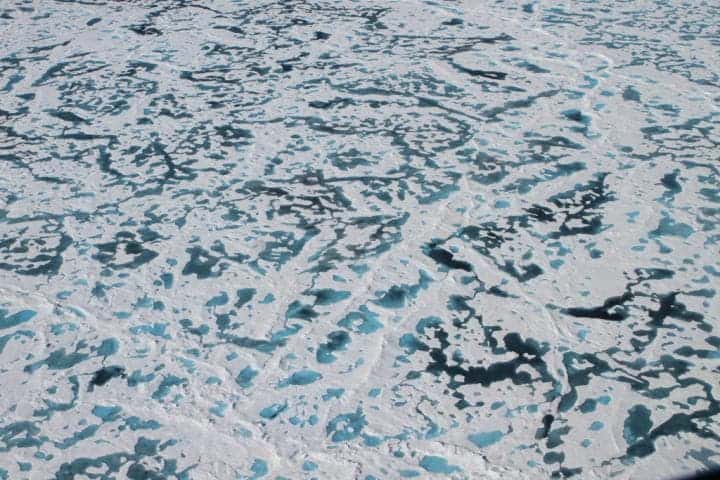The once pristine-white snow of the Arctic is slowly turning green. This phenomenon, first noticed in 2011, was as surprising as it was disturbing but now, researchers believe they know how it happened.

In 2011, scientists had to rub their eyes — twice. They had observed something unprecedented: a massive bloom of phytoplankton beneath the Arctic ice, in waters that should have been way to dark for any light to penetrate them. How then did the light go in, allowing the phytoplankton to conduct photosynthesis?
Using numerical modelling fitted with observations, researchers from the Harvard John A. Paulson School of Engineering and Applied Sciences (SEAS) found that global warming caused the melting of a significant quantity of ice and this thinning allowed the light to get through and facilitating this bloom. Blooms like this, they say, will become much more common in the future, and will create major disruptions in Arctic food chains.
“Our big question was, how much sunlight gets transmitted through the sea ice, both as a function of thickness, which has been decreasing, and the melt pond percentage, which has been increasing,” said Chris Horvat, first author of the paper and graduate student in applied mathematics at SEAS. “What we found was that we went from a state where there wasn’t any potential for plankton blooms to massive regions of the Arctic being susceptible to these types of growth.”

Phytoplankton is at the very bottom of the entire food chain in the Arctic. Every summer, ice retreats and uncovers parts of the plankton, creating a massive boom which attracts fish, which in turn attract larger predators. If blooms happen earlier and more often, it forces us to rethink our entire idea of the food web, with dramatic and as-of-yet unforeseeable consequences.
Due to rising temperatures, ice thickness in the Arctic has reduced by an average of about a metre in the past 30 years. Two decades ago, only 3-4% of the Arctic sea ice was thin enough to allow blooms underneath. Nowadays, almost a third of the ice extent can host blooms.
“The meter decline in sea ice thickness in the Arctic in the past 30 years has dramatically changed the ecology in that area,” said Horvat. “All of a sudden, our entire idea about how this ecosystem works is different. The foundation of the Arctic food web is now growing at a different time and in places that are less accessible to animals that need oxygen.”
Recent climate change may have markedly altered the ecology of the Arctic Ocean, researchers warily conclude.
Journal Reference: Christopher Horvat, David Rees Jones, Sarah Iams, David Schroeder, Daniela Flocco, and Daniel Feltham — The frequency and extent of sub-ice phytoplankton blooms in the Arctic Ocean. DOI: 10.1126/sciadv.1601191


